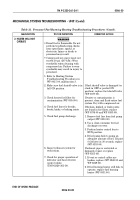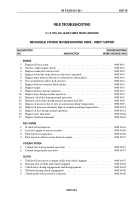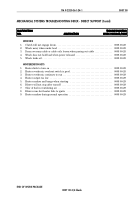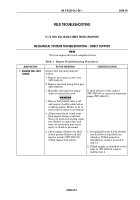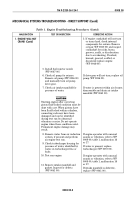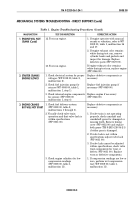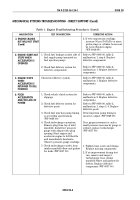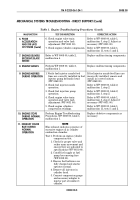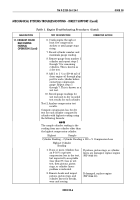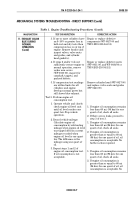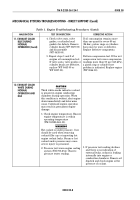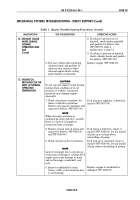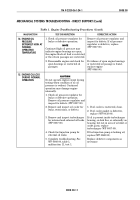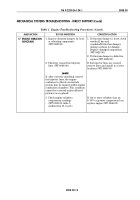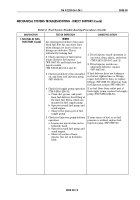TM-9-2320-361-24-1 - Page 134 of 1176
TM 9-2320-361-24-1
0008 00
0008 00-6
MECHANICAL SYSTEMS TROUBLESHOOTING - DIRECT SUPPORT (Contd)
MALFUNCTION
TEST OR INSPECTION
CORRECTIVE ACTION
11. EXHAUST COLOR
BLUE DURING
NORMAL
OPERATION (Contd)
6. Crank engine through at
least five compression
strokes or until gauge stops
rising.
7. Record cylinder number and
maximum gauge reading.
8. Remove gauge from number 1
cylinder and repeat steps 1
through 7 for remaining
cylinders. This is known as
a dry test.
9. Add 1 to 1 ½ oz (29–44 ml) of
clean engine oil through plug
port for each cylinder before
connecting compression
gauge. Repeat steps 5
through 7. This is known as a
wet test.
10. Record gauge readings for
wet test next to dry recorded
test results for each cylinder.
Test 2. Analyze compression test
results.
Compute compression loss for dry
test for each cylinder compared to
cylinder with highest reading using
the following formula:
1. If one or more cylinders has
an 8–10% or greater
compression loss in dry test,
but improved to acceptable
(less than 8%) loss in wet
test, then pistons, piston
rings, or cylinder liners
problem is indicated.
2. Remove heads and inspect
pistons, piston rings, and
cylinder liners for breaks,
wear and scoring.
If pistons, piston rings, or cylinder
liners are damaged, replace engine
(WP 0046 00).
If damaged, replace engine
(WP 0046 00).
Table 1. Engine Troubleshooting Procedures (Contd).
NOTE
The sample cylinder reading is the
reading from any cylinder other than
the highest compression cylinder.
Highest
Sample
Cylinder Reading – Cylinder Reading x 100 = % Compression Loss
Highest Cylinder
Reading
Back to Top

